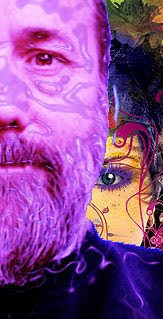In Defense of Pseudoscience
— Arthur C. Clark
Over the past several months The Farm Ecovillage Training Center has been blessed with the presence of a wonderful personality in the form of our new Assistant Innkeeper, KMO, host of the C-realm Podcast, a crossroads café at the edge of our global abyss. Among the many improvements we have experienced is the emergence of our own weekly podcast, ETC Voices, that transports listeners to our lovely Tennessee home and visits with our interesting friends and neighbors. Who knows? This could be the start of reviving Green Acres or Petticoat Junction, of at least PeeWee’s Playhouse.
Recently one of our listeners has launched a broadside on a recent ETC Voices show that we had not thought particularly controversal. The attack centers on our interpretation of Rudolph Steiner and biodynamic agriculture, Elaine Ingham and the soil-food-web concept; and real science versus pseudoscience.
While we don’t disagree with many of the points that have been cross-posted on various websites, we feel compelled to defend pseudoscience, if not Steiner personally.
Here is what we wrote on http://www.cultivate.ie/elearning/discussion-forum/:
On the 10th of November, 1619, while camped with the Habsburg army at Neuburg on the Danube, René Descartes had, in one night, three dreams, which he interpreted at the time, even before waking, to be revelations from the Spirit of Truth, reprimanding him for the sins of his youth but extending guidance for his future life.
In his third dream, the angel came to Descartes and said, “Conquest of nature is to be achieved through number and measure.” That was the beginning of the Cartesian way of dissecting the natural world — one of mechanics, formulae, and, eventually, human design, including most recently, nuclear power, genetic engineering and red nanothermite paint.
We might ask, however, if the words of the angel were intended not as a gift to Descartes, but as a grim warning, rather like the Spirit of the Future standing over the grave of Ebenezer Scrooge and pointing downward.
While it is comforting to find some intellectual terra firma to grasp onto, we are forced to acknowledge that our still evolving neocortex exists as vibrating waves and particles in a greater, loose, fractal matrix of external vibrations, with neither boundary nor solidity. Indeed, our cravings for boundary and solidity are more than likely evolutionary echoes carried up the DNA chain from the brain of our reptile ancestor that climbed first onto land and then up into the trees. We seek that elusive comfort, and so we grasp classifications like solid, liquid and gas, or science versus pseudoscience. What we are forced eventually to understand, though, is that uncertainty is pervasive and in insecurity there is wisdom.
The genius of our scientific method is not that it separates fact from fiction by reasoned discourse —a cursory examination quickly reveals that is far from the historical case — but rather that it legitimates distrust. In that distrust there is hope for the occasional novel working hypothesis to emerge. Loaded words like “scientific,” “unscientific,” “pseudoscience,” “cult,” “superstition,” “anecdotal,” “occult” and “woo” serve the advocate and the propagandist, but do not advance a co-creative process. They obscure rather than enlighten. In my 63 years here, I have observed many occurrences I cannot explain, and neither can any science I know of at the present. I could term it magic, but that has its own baggage, so I will just call it UO, for “unexplained observations.”
When Joseph Fourier observed the greenhouse effect for the first time it was, for him, a UO. What we now know to be infrared radiation Fourier called chaleur obscure (non-luminous heat). From the work of a contemporary, William Herschel, Fourier realized that how you warm the Earth is the same as how you warm a greenhouse — by trapping light and forcing it to give up its heat. Fourier posited, although he could not prove it, that this is what gave Earth its habitable climate. Thirty-seven years later, the Irish physicist John Tyndall devised laboratory experiments that proved Fourier’s theory and 37 years after that Swedish chemist Svante Arrhenius warned that industrial-age coal burning would magnify the natural greenhouse effect. He even provided a number — five degrees Celsius — corresponding with a doubling of atmospheric carbon dioxide. Were I a numbers man, I might believe that such breakthroughs invariably arrive at 37 year intervals (such as did the Club of Rome study, Limits to Growth, in 1972) and so would be anxiously anticipating the year 2046, perhaps expecting the technological singularity.
But fallacies of science are many, and one of the faulty syllogisms that it is easy to fall prey to is post hoc ergo propter hoc — as before, so after. My point is not that science is rubbish, but rather that the division between science and art is not a bright line. Clinging to the one while heaping scorn upon the other is foolish from whichever direction it emanates, like thinking that plants do not communicate with humans, that ocean waves do not alter brain waves, or that your body is a solid object, standing on solid ground.



Comments
the human spellchecker
typo in the header. Should be: Pseudoscience.